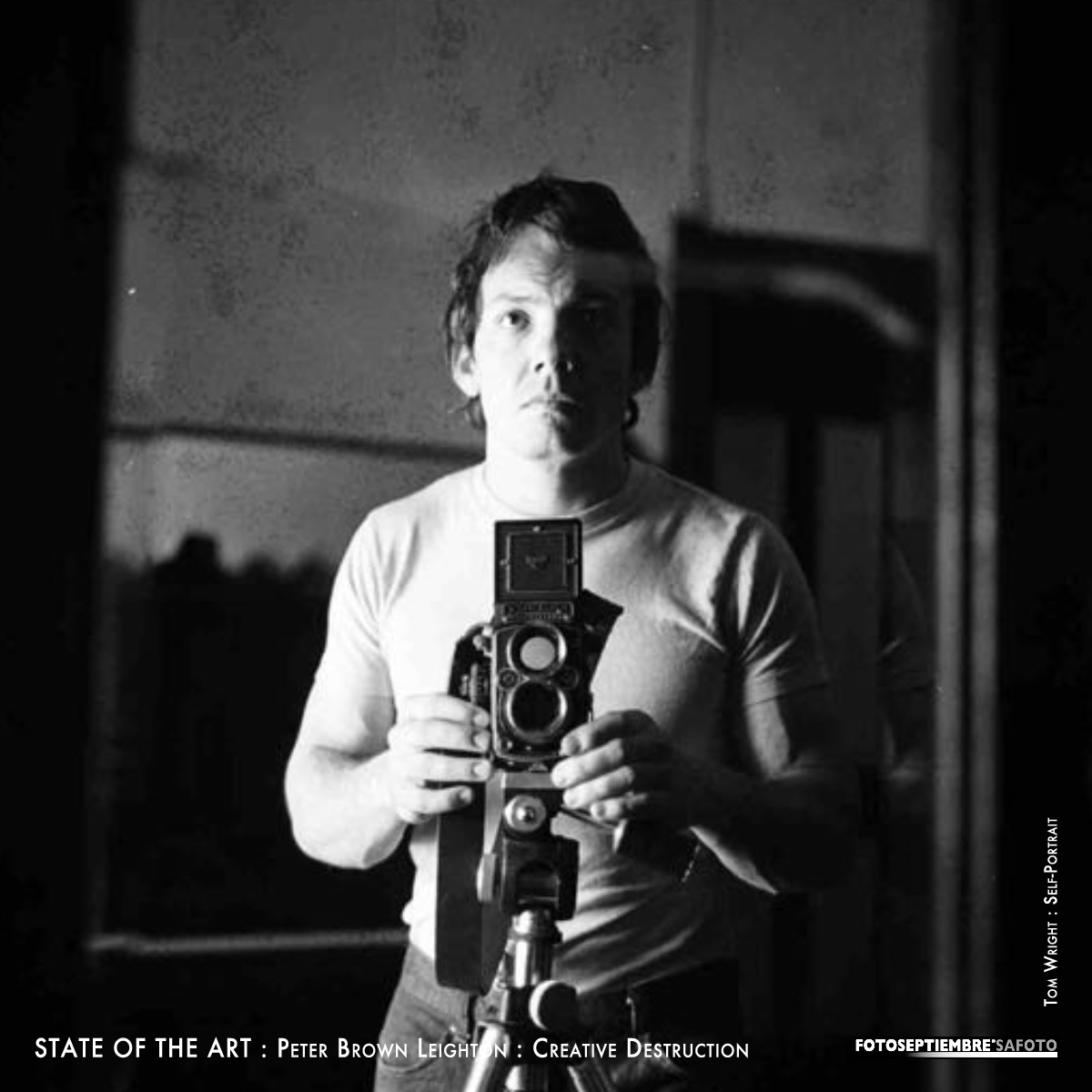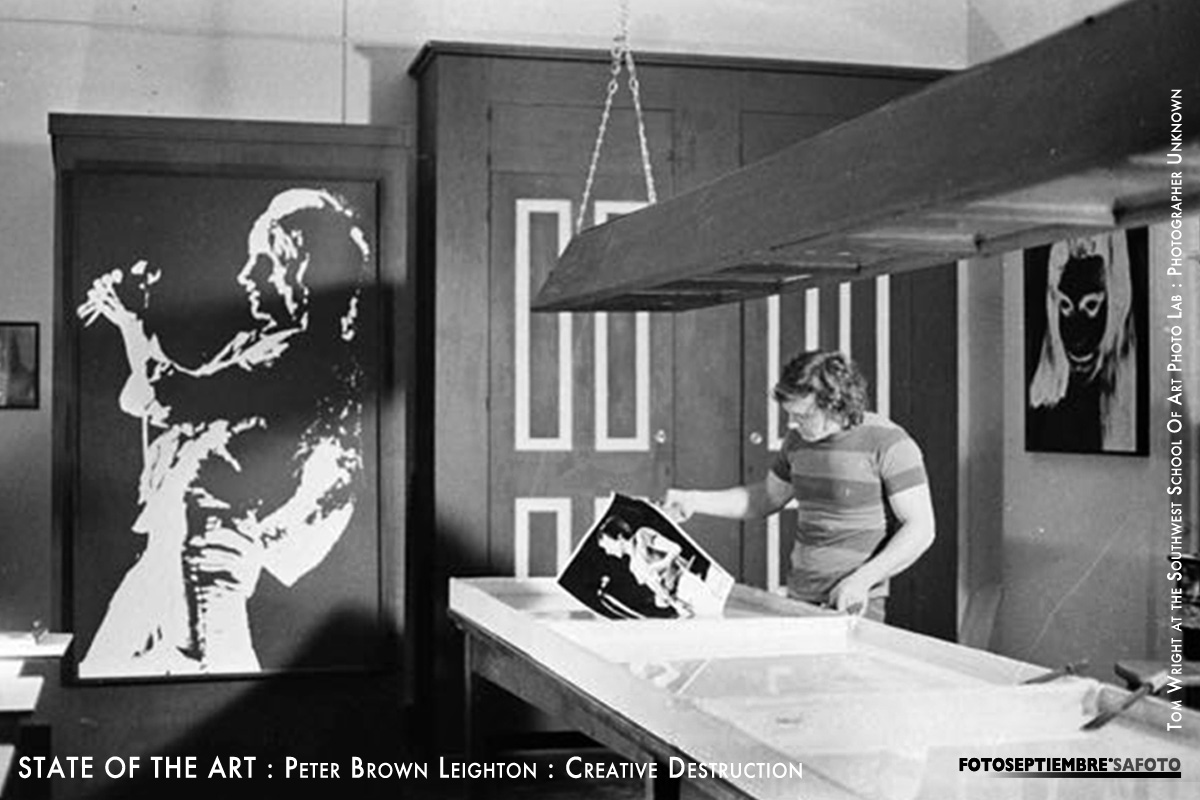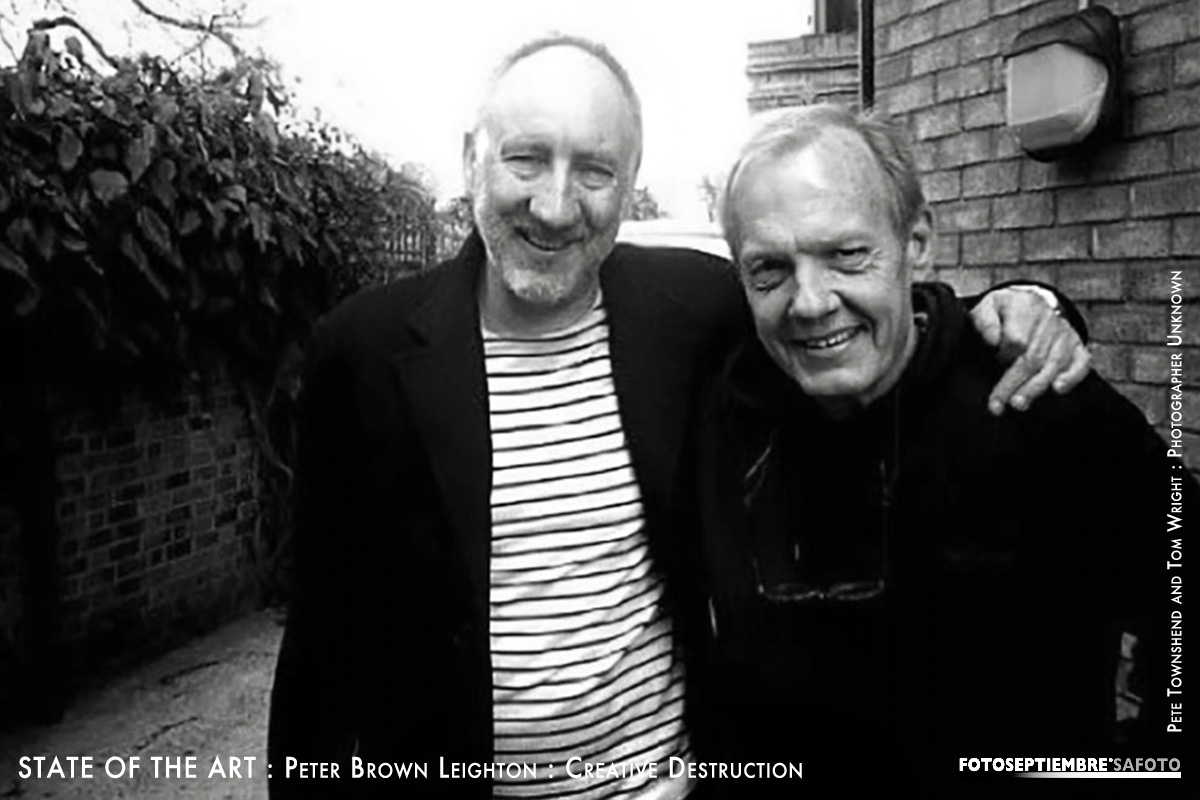State Of The Art : Peter Brown Leighton : Creative Destruction
State Of The Art : Peter Brown Leighton : Creative Destruction
#fotoseptiembre #safoto #stateoftheart #peterbrownleighton #creative destruction #tomwright #petetownshend #thewho #gustavmetzger #southwestschoolofart #photography #humanity #polity #art #sanantonio #texashillcountry #texas
 Tom Wright (1944-2022) – Rock And Roll Photographer
Tom Wright (1944-2022) – Rock And Roll Photographer
Imagine a past, that you wish you had lived, full of heroes and villains and fools. –“Imagine a Man”, The Who By Numbers
Auto-Destructive Art, is one of many variations on themes made prevalent in the avant-garde art movements of the first half of the twentieth century. It is about the suppression of the ego in the making of art – about the removal of the artist from the culmination of his or her work – during which, in theory at least, this culmination manifests of its own accord by self-destructing right before the viewer’s eyes.
In reaction to the predations of war, Gustav Metzger, who had come of age during World War Two, drafted the principles of auto-destruction in a manifesto published in 1959.
His tagline was simple: Destroy, and you create.
In 1961, wearing a gas mask, Metzger, in fact, performed one of his first acts of auto-destruction on the banks of the Thames – as he sprayed hydrochloric acid on a 9 x 8-foot layer of three, variously colored, plastic curtains and watched them melt away in front of a crowd of astonished passersby.
In this same year, two young men met at Ealing Art College in London, one an American named Tom Wright, the other, Englishman Pete Townshend, an aspiring rock and roller, who would shortly thereafter found the band The Who.
Wright, a photography student at Ealing, would introduce Townshend to his collection of American blues records and to the mind-altering effects of recreational drugs. Townshend would acknowledge this favor a few years later by inscribing on a Who album cover: “For Tom, without whom I would not have whomed.”
In 1962, Gustav Metzger gave a lecture at Ealing about the auto-destructive art movement. Pete Townshend was in attendance.
In 1964, Townshend destroyed his first guitar, a Rickenbacker, in a performance at a seedy east side London pub. Rolling Stone magazine considers this event to have been so momentous that it was enshrined in 2004 in their list of “50 Moments That Changed Rock & Roll”. Townshend would later cite Metzger’s lecture as his inspiration.
“I really believed it was my responsibility to start a rock band that would last only three months, an auto-destructive group,” Townshend said later. “The Who” he continued, “would have been the first punk band except that we had a hit.”
In the late 1960’s, Tom Wright would serve as both road manager and photographer for The Who as they toured the United States for the first time, he having previously been deported back to the U.S. after an arrest in England for possession of marijuana.
In 1972, shortly after graduating from university, I became the caretaker of an abandoned, nineteenth century nunnery, owned by a local historical society in San Antonio, Texas. Today, the site is known as the Southwest School of Art. In the early 70’s, as it began its transition to secular purpose, Tom would be hired as the school’s first photography instructor, shortly after which I would talk my way into becoming his apprentice and darkroom assistant.

My association with Tom would last four formative, though turbulent, years. It was from him that I first learned about Gustav Metzger, auto-destructive art, its connection to The Who’s own subversive, anarchic tendencies, and the ways and means of the world of rock and roll entertainment.
Tom, it must be said, was just as inclined to anarchism and impulsive self-harm as the bandmates he had earlier served, and anyone drawn into his orbit, when I knew him at least, ran the risk of eventually burning out in the atmosphere of a singularly chaotic personality. Eventually, we would part ways, and I have seen him only a couple of times since. Over the years, nonetheless, I have often thought about him, the improvisational nature of his life, and how it had come to bear on my own at an impressionable age – particularly in the evolution of my creative practice.
Gustav Metzger’s concept of creative destruction, to be sure, became a paradoxical ball of wax when applied to Tom’s interpretation of it. Metzger’s view was tinged with a sense of absurd tragedy if not pessimism, pulling the weight of European World War Two carnage in its wake. In the United States, physically untouched by the war, and unleashed economically by virtue of it, the idea of creative destruction was considered a future-forward concept, as an explosion of innovative ideas, replacing old paradigms in every corner of the nation, generating new wealth and opportunities for those agile enough to take advantage.
Tom, then, stood astride both of these interpretations, influenced by Metzger on one side, by way of Townshend, while at the same time, given his country of birth, embracing Uber America on the other, this particularly in the sense that he wasn’t interested in remembering the past or in warnings about repeating it — or, for that matter, even in preserving it. For him, creative destruction was all about the perpetual now, acting with purpose, overcoming inertia, replacing the old with something new, forging optimism and positivity into weapons to overcome all obstacles. Given the differences between these two lines of philosophical thought, Tom, conflicted, would all too often wind up breaking eggs without successfully following through on that part of the process in which an edible omelet might be made.
It wasn’t until recently, however, that, for the first time, I began to delve more deeply into the various convoluted, twentieth century art world currents, from Robert Frank to Duane Michals in photography, whose images had inspired me to make my own, to the art movements, DaDa and Fluxus, that had spawned Gustav Metzger’s work and had fed the youthful ambitions of Pete Townshend and Tom.
For better or worse, I am, I have concluded, a mongrel product of these several tangled associations, contradictions, and ways of seeing. As a Jack of all traditions, and master of none, I am, then, not a fan of the inflexibilities of ideological thinking. It has always seemed to me that as ideologues mature they come to suffer from the same sclerotic pathologies as the opponents whose seats in the halls of power they have been intent on taking.
Pete Townshend, in fact, addressed this idea in 1971 in his song “Won’t Get Fooled Again”, a cautionary tale, whose message was that establishments and revolutions are really two sides of the same coin.
In 1990, the remaining members of The Who would perform “Won’t Get Fooled Again” on the same night the band was inducted into the Rock and Roll Hall of Fame, incongruously surrounded by men in tuxedos and women in evening gowns. Roger Daltrey would not sing the song’s last two lines, “Meet the new boss, Same as the old boss”. Nor were any guitars destroyed during this performance.
By then, of course, Pete Townshend and The Who had become seminal figures in the pantheon of modern rock and roll mythology.
Gustav Metzger would later die in 2007, leaving an impressive trail of creative destruction behind.
Tom, during this same period, in spite of enduring major heart surgery, a series of strokes, and treatment for his various addictions, would sell his considerable archive to The Dolph Briscoe Center for American History at the University of Texas and, several years later, would publish two hagiographic memoirs: Roadwork: Rock and Roll Turned Inside Out, 2007, and Raising Hell On The Rock ‘n’ Roll Highway, 2009, paeans to his hard core drug and alcohol fueled halcyon days in the 1960’s and 70’s, Pete Townshend prefacing both.

In 2022, Tom Wright would pass away, peacefully, not with a bang but a sigh, like one of Gustav Metzger’s public sculptures constructed to slowly crumble over time from the abuses of modernity: ultimately ceasing to exist altogether – to the end, a hero to some, a disappointment to others, and ever faithful to his belief in the awesome, creative – and destructive – power of rock and roll.
•••
